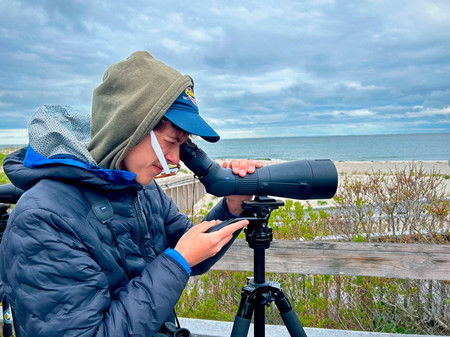
While most students spent their senior year of high school preparing for graduation, Mason Currier was busy making history, one bird at a time.
Currier, a freshman environmental science major from Mobile, Alabama, recently broke the state record for the most bird species seen in a single year. He reached the milestone alongside fellow birder Andrew Lydeard, who serves as program coordinator at Alabama Audubon. The organization is the statewide chapter of the Audubon Society, a national federation of more than 500 chapters that advocates for the preservation of wildlife and natural resources.
The duo spotted their record-setting bird 75 miles offshore surrounded by rare shearwaters.
“I was never a nature guy,” Currier said. “But in middle school, I had more free time, and I started noticing birds. One field guide and a pair of binoculars later, I was hooked.”
Raised along the Alabama Gulf Coast, Currier spent countless hours birding around Dauphin Island, a hotspot for waterbirds and migrating songbirds. He challenged himself to see 300 species before graduating high school, a feat only a few people achieve each year. His list grew quickly and included rarities such as a Sprague’s pipit, glaucous-winged gull, Harris’s sparrow, American goshawk and thick-billed longspur, the first ever recorded in Alabama.
“Some took long drives, tracking down and patience; some just amazing luck,” he said. “But what I love most is the birding community. It’s built on a love of nature, supporting each other and a shared drive to uncover biodiversity.”
Currier credited much of his success to the support and friendly competition he shared with Lydeard. The two often chased rare sightings together and even hit the 300-species mark on the same day in April.
Now a student at Samford, Currier hopes to channel his passion into his studies.
“Feet in the dirt and hands on a pair of binoculars is my happy place and a place where a lot of good can be done,” he said. “I’m excited to take an interest of mine into a structured degree program over the next few years.”
Currier has his sights set on reaching 350 species before the year ends. And while he is unsure what the future holds for his birding journey, he is certain of one thing: Alabama still has plenty of birds left to discover.
GIVE: Support impactful work at Howard College of Arts and Sciences.
